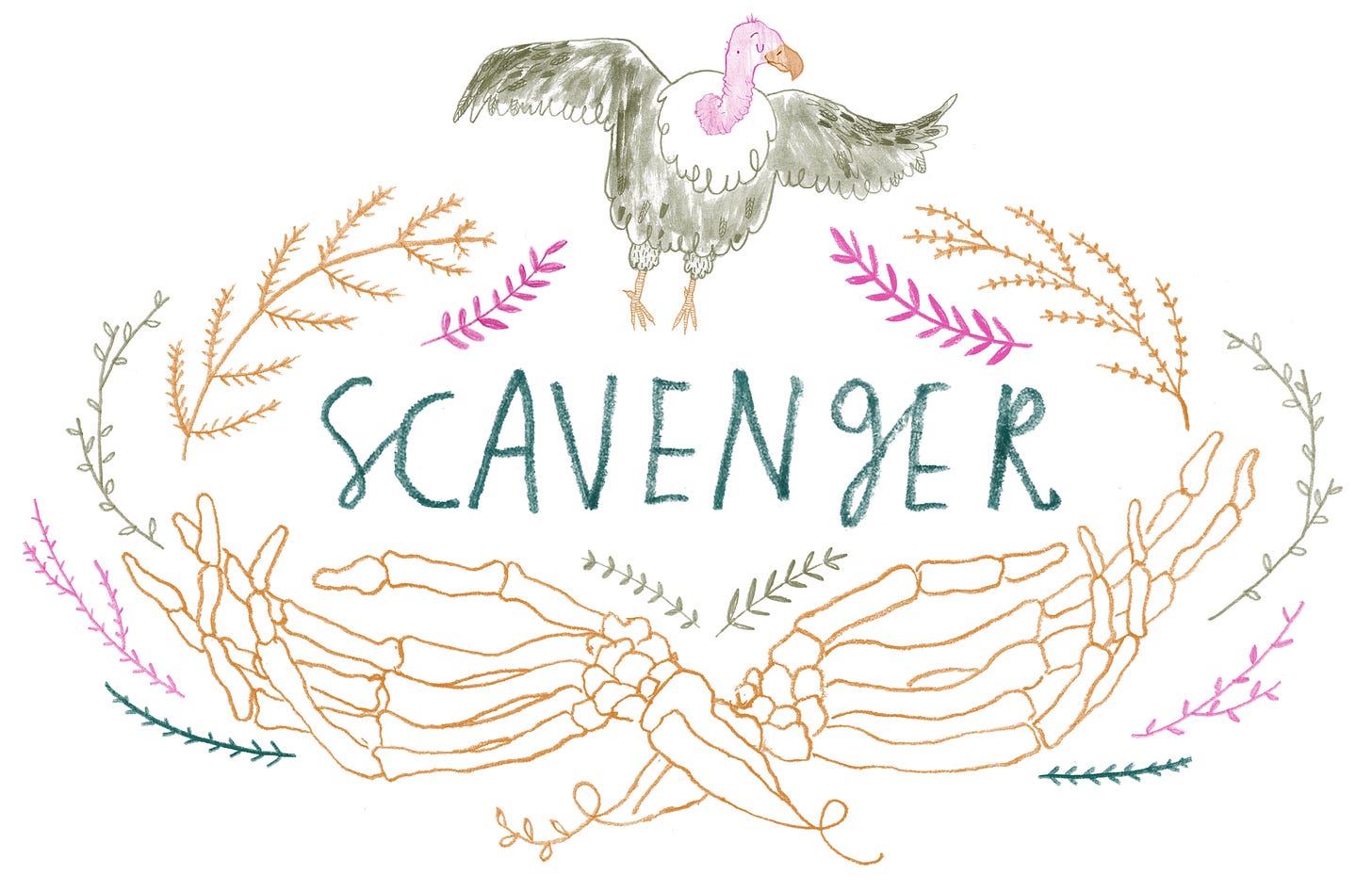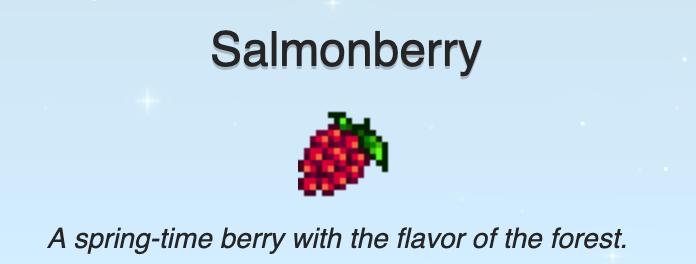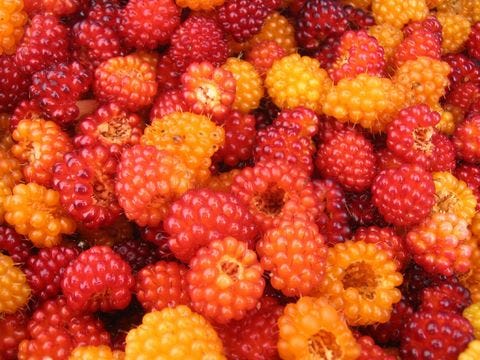The Pacific Northwest's best berry
I thought the abundant salmonberries in Stardew Valley were fictional. They're not!

I started playing Stardew Valley last month, and I’ve already burned through a year and a half in the game. The farming sim is popular for good reason – it’s soothing, and the seasons blur by in a gentle rhythm of daily chores and harvests.
When I play (or watch other people play) video games, I like to gather and tidy. Some deep part of my brain lights up when there are randomly placed items to find and forage. Fortunately, this is a core mechanic in Stardew Valley. It is a perfect game.
If you really want to set those foraging endorphins on fire, there are two days in the game that will absolutely break your brain. On blackberry day in the fall, you can round up at least 100 blackberries without trying as you wander around Pelican Town and its surrounding woods. And every spring, bushes all over Stardew Valley fill with pink salmonberries. During my first spring, I thought they might be fictional. During my second spring, I decided to learn more.
As it turns out, salmonberries aren’t fictional at all. They grow all over the Pacific Northwest, popping up near streams and showing up in deep-rooted traditions. It just took a fictional farming game to make me realize how little I know about the world’s flora.

Berries grow all over the Pacific Northwest. One genus, Rubus, encompasses as many as 750 species that grow on every continent except Antarctica. Marionberries, boysenberries, and loganberries are all members of the same plant family, and it’s easy to find them in jams, desserts, and ice creams. “Imagine a blackberry, but better” – that’s how Tillamook, an Oregon-based dairy company, describes marionberries.
Meanwhile, less commercially familiar berries grow wild by the region’s streams and rivers. Along with salmonberries, you can find other berries with delightful names, like thimbleberries or blackcap raspberries.
Salmonberries ripen first, growing on bramble bushes bursting with flowers that brilliantly mimic a vivid sunset. You can snack on a raw handful of them, freeze them, bake them into pie with a graham cracker crust. They’re rich in vitamin C, carrying you out of winter and into spring’s warm embrace. Hummingbirds love to sip from their flowers, so if you have salmonberries in your yard, you’ll probably have some hummingbird friends, too. As for the berries, they’re as colorful as their blossoms, ranging from an orangey pink to a color described as “neon.”
An article in an old Skagit Food Co-op newsletter turns salmonberries into pure poetry. The berries have a “polite tartness.” They’re “a quiet steady fruit. Never seen in stores.” Yet they have a charming quality unlike any other berry. “They are a sunset, a fire, a mini golden lantern.”

Photo: Chris Corrigan / Flickr
Before people blogged about salmonberry pie on the internet, indigenous communities had already put salmonberries to brilliant use. Slow Food USA says:
The salmonberry has been a part of both indigenous and regional foodways in North America for millennia, but due to the plant’s relatively small growing region, the salmonberry has never enjoyed the widespread popularity of most berries. However, the salmonberry is deeply appreciated by the communities it serves. It is especially culturally significant to Native peoples, appearing in their cuisine, folklore, and medicinal practices.
One of the most famous recipes is akutaq, a luscious dish that flavors whipped fat with berries and fish. It’s a special occasion dish among Native Alaskans, often made to celebrate a successful hunt or welcome a guest. Today, vegetable shortening like Crisco is often used instead of the traditional animal fat.
Considering the cultural importance and natural beauty of salmonberries, it’s no surprise they’ve quietly attracted some hardcore fans. In 2018, the Peninsula Daily News (a newspaper that covers Washington state) published an impassioned pro-salmonberry op-ed that argued in favor of making salmonberry blossoms the state flower.
Compelling and utterly sweet reasons include “They grow along roads” and “You don’t have to bend over to pick them” and the fact that they’re sometimes called “bear candy.”
“The time has come to honor our plant heritage by making the salmonberry the official state flower,” the author opines. “We’ll thank ourselves later if we do the right thing now.”
Something else
I’ve been trying to read more lately, and I’ve been tearing through Hyperion by Dan Simmons this week. The book is structured like The Canterbury Tales, except its seven pilgrims journey through space and time to oppose a god-like metal creature on the eve of an intergalactic war. (It is science fiction, clearly.)
As always, I wish there were more women! But the ones who are included are pretty rad. There’s a 50 page section that’s written like Natasha Lyonne’s Russian Doll dialogue.
If you don’t want to buy books from Amazon any more, you can probably order this one from your local indie seller. (Jack found our brand new copy at a thrift store.) Moving forward, I’m planning to order most of my books through Imprint, a bookstore I love because my friend Samantha Ladwig just bought it! You can follow her dreamy PNW bookselling adventures over on Instagram.
PS: In case you missed it, I’m publishing a new indie magazine focused on DC’s DIY culture, and we’re publishing our biggest announcement yet tomorrow morning! You can stay in the loop by signing up for our newsletter, or watch out for an announcement in Scavenger next week.


